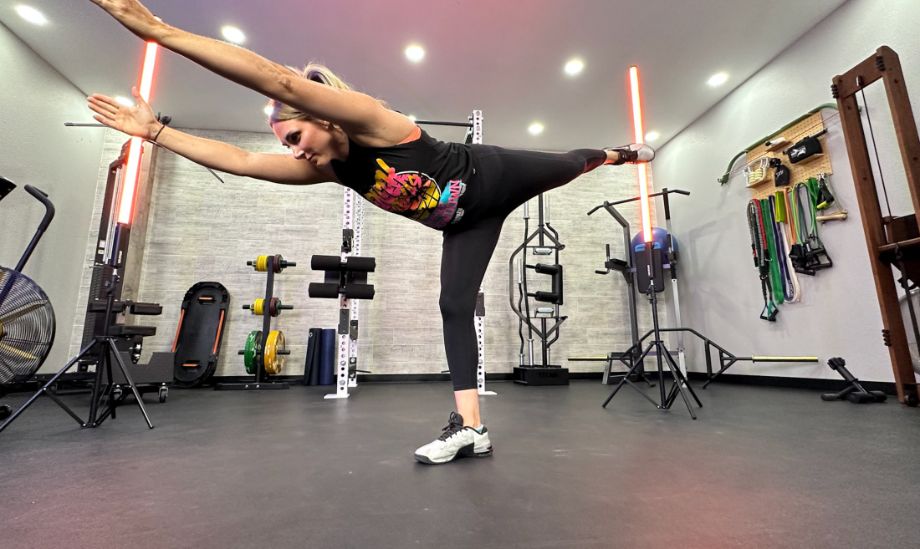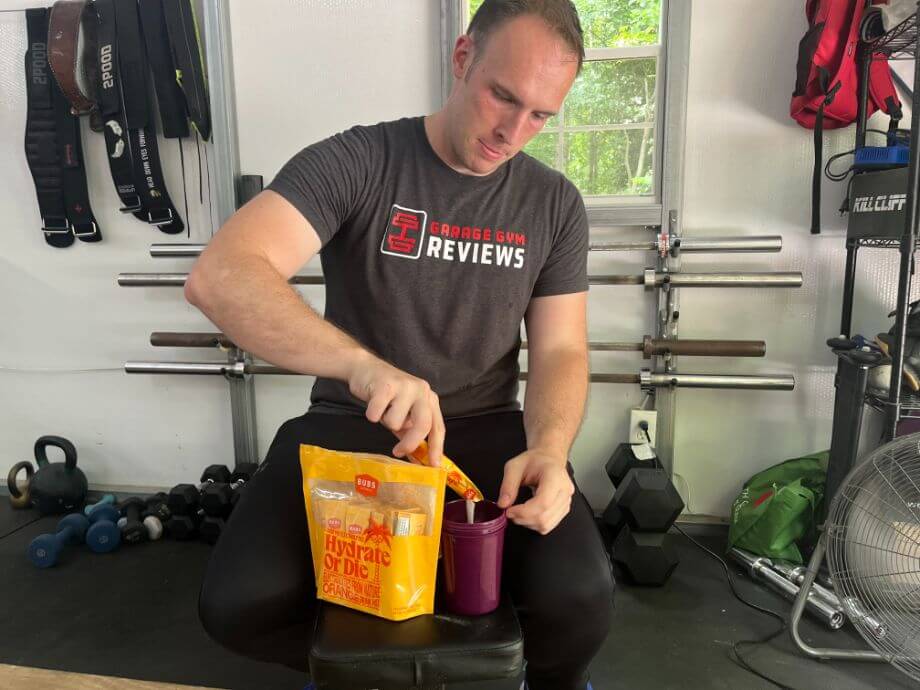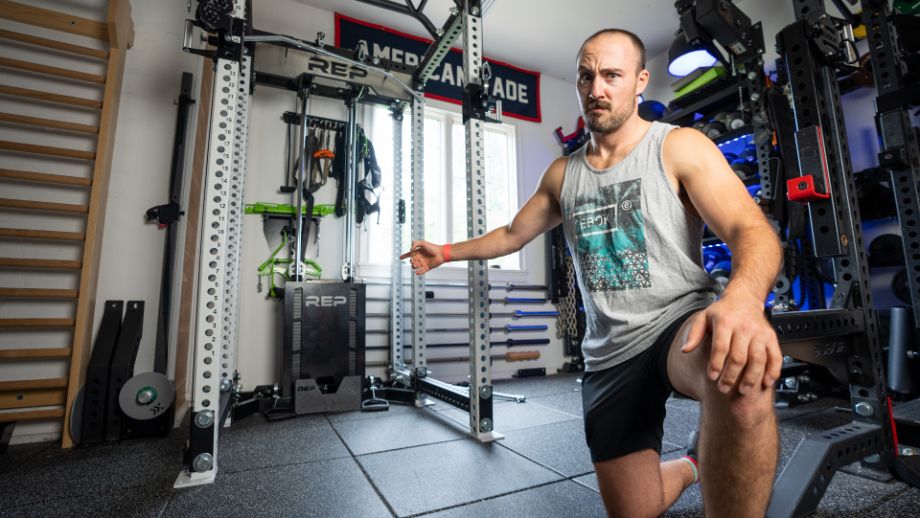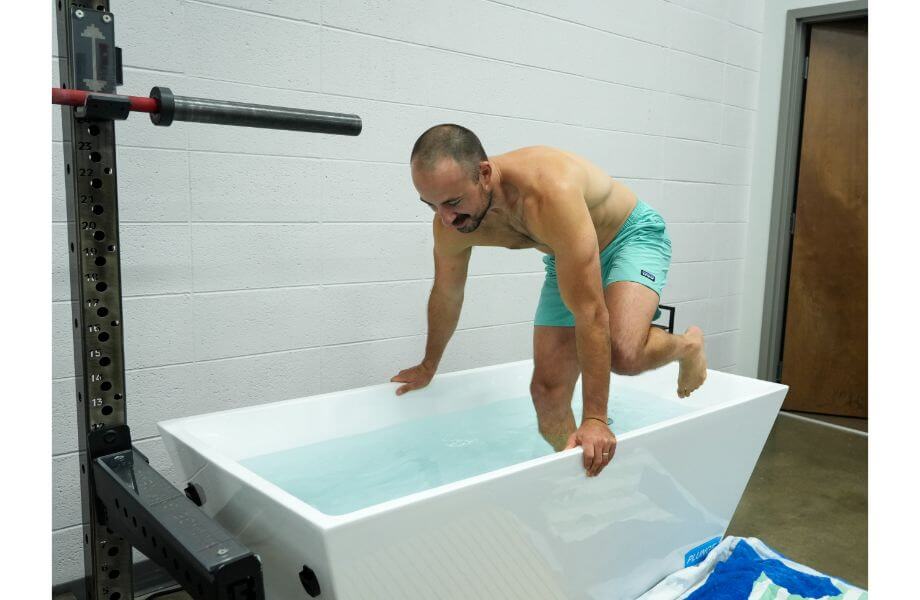“Help! I’ve fallen and I can’t get up!”
It’s easy to poke fun at those infamous commercials depicting the elderly tumbling to the floor, but falls are no laughing matter. A 2020 report published by the Centers for Disease Control and Prevention1 estimates nearly 36 million falls among seniors each year, with 10.2% of adults 65 or older reported a fall-related injury. That’s why regular exercise that incorporates strength, mobility, and balance training is crucial for older adults.
They’re not the only ones who should consider adding balance exercises to their exercise routine. Good balance provides health benefits for people of all ages, including improved posture, enhanced athleticism, and greater overall physical strength.
RELATED: The Best Balance Boards
We’ve pulled together a list of the nine best exercises to help you build better balance and enjoy greater overall health and well-being. Check it out!
Defining Balance
Healthy adults don’t spend much time contemplating balance. As long as we’re able to stand in place, walk, and perform everyday activities without toppling over, we’re good, but we may not realize that balance problems are not exclusive to older individuals.
According to the National Institute on Aging2, certain medications, inner ear problems, and medical conditions, including diabetes, heart disease, and stroke, could cause balance problems, even in younger adults.
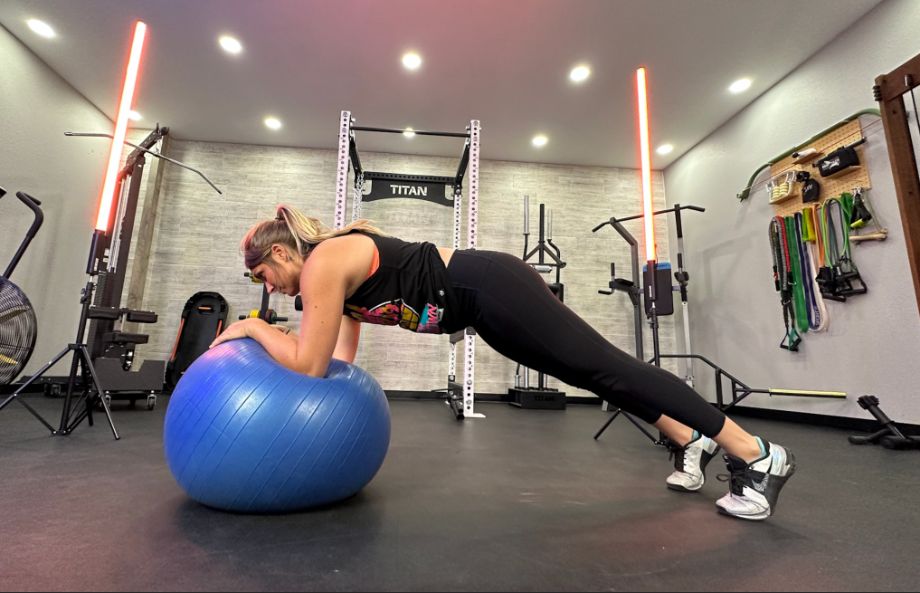
Balance is also important in fitness and sports. It’s what helps a running back stay on their feet after a failed tackle. It’s how a gymnast sticks the landing on a narrow beam after a majestic back-handspring-to-back-tuck maneuver. It’s also how they do all that crazy stuff on American Ninja Warrior.
RELATED: The Best In-Chair Exercises
Best Balance Exercises
Balance exercises have many of the same benefits as strength training when it comes to your health, so try adding the following balance exercises to your next strength sesh!
Note: If you struggle at first to maintain your balance during these exercises, use a chair, wall, or other surface to right yourself as you build strength.
Single-Leg Stand
Why it’s great: The single-leg stand is a straightforward unilateral strength training exercise. It’s simple to learn, making it a great starting point before incorporating more advanced balance exercises into your routine.
How to do it:
- From a standing position, lift your right foot off the floor and hold.
- Hold this position for the desired duration, then place your foot back down.
- Now, lift your left foot and repeat.
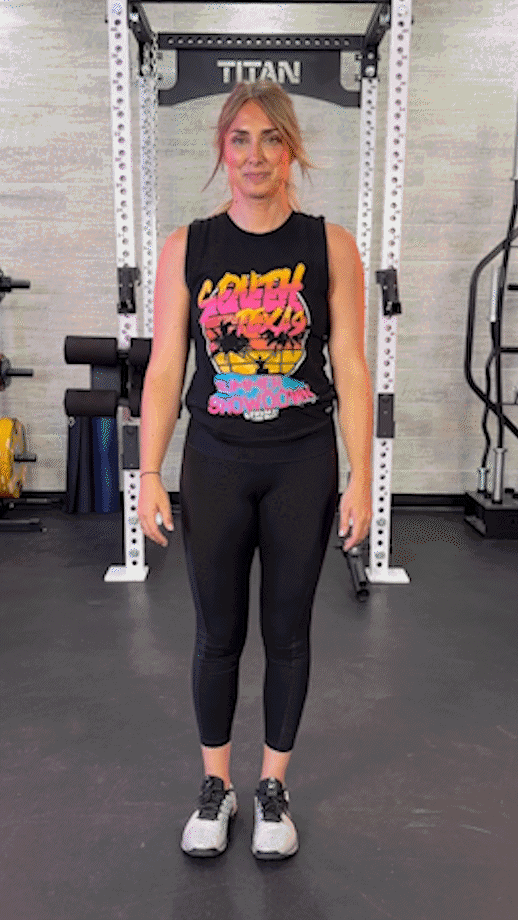
Tree Pose
Why it’s great: Tree pose is one of the quintessential yoga poses and serves as a natural progression of the single-leg stand. It’s more challenging, provides more muscle activation, and improves proprioception (or body awareness), which, according to a study published by Frontiers in Human Neuroscience3, can lead to better motor function.
How to do it:
- From a standing position, lift your right foot off the floor.
- Place the bottom of your foot on the inside of your left leg either next to or above your left knee using your right hand.
- Raise your hands directly over your head and hold the position.
- Slowly return to the starting position. Now, repeat the movement but, this time, bring your left foot next to or above your right knee using your left hand.
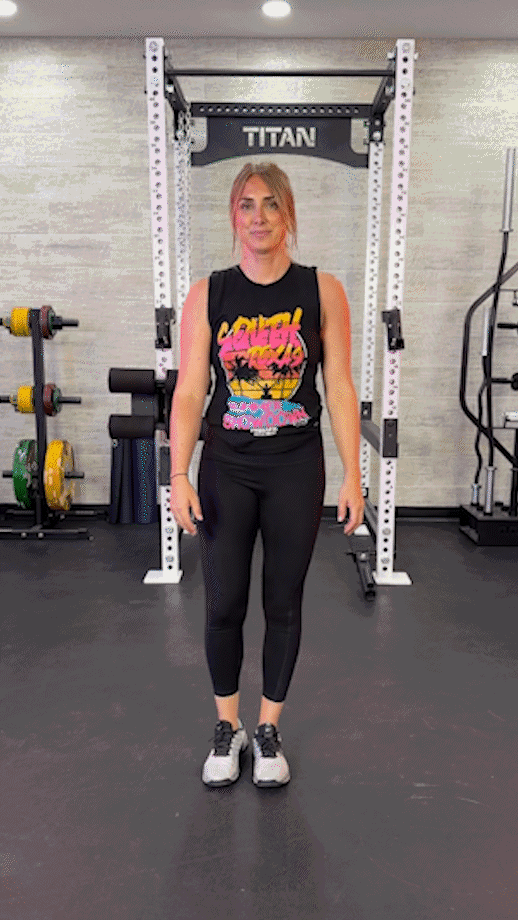
Single-Leg Reach
Why it’s great: The single-leg reach looks unassuming, but it’s actually quite advanced. Lowering your chest as you balance on one leg increases the challenge and the activation in your upper body and core.
How to do it:
- Stand with your feet together.
- Bend one knee, then slowly lift the foot of your opposite leg off the floor, raising the leg behind you. Simultaneously bring your arms over your head and lower your chest toward the floor.
- Continue until your chest is nearly parallel with the floor. Maintain a straight line from your fingers to the foot of your raised leg while keeping your working knee bent.
- Slowly return to the starting position, place your foot back down on the floor, switch legs, and repeat.
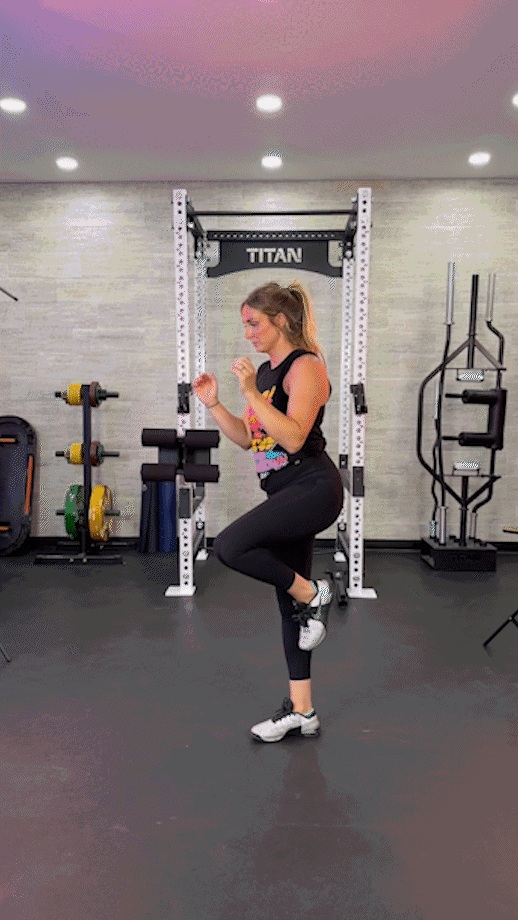
Heel-to-Toe Walking
Why it’s great: Heel-to-toe walking is another basic balance movement that you can perform just about anywhere. By keeping your feet so close, you’re creating instability, which activates stabilizing muscles to help keep you from falling.
How to do it:
- From a standing position, slowly walk forward by placing one foot in front of the other. The heel of your moving foot should touch the toes of your resting foot as you move, thus the name “heel-to-toe” walking.
- Keep your eyes fixed ahead, your posture tall, and your arms extended to the sides for balance, if needed.
- Walk for the desired distance, then rest.
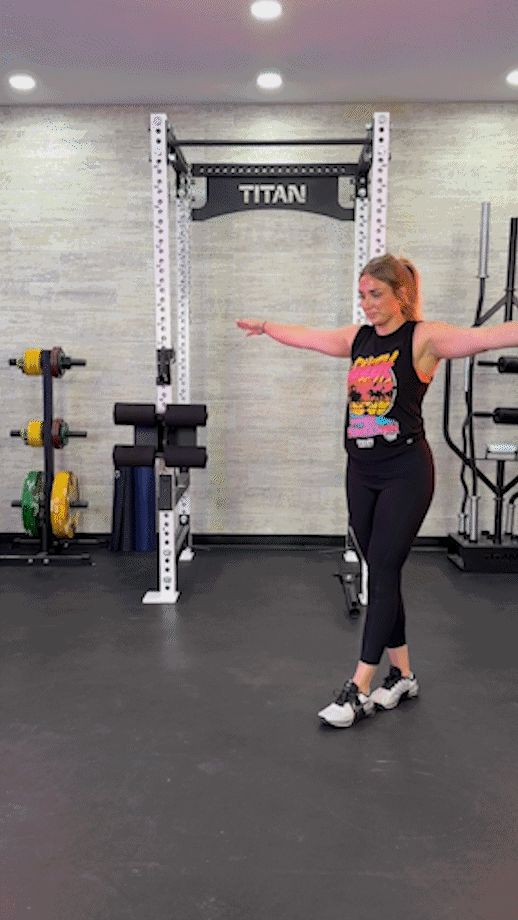
Single-Leg Romanian Deadlift
Why it’s great: A study published in Medicine and Science in Sports and Exercise4 called the single-leg Romanian deadlift one of the best exercises for your glutes and hamstrings, making it great for lower-body training splits, but it’s also super good for building better balance.
How to do it:
- Stand with your feet hip-width apart. If you’re using a pair of the best dumbbells, hold one on either side using a neutral grip.
- Shift your hips back, bring your chest down, and slowly lift one leg into the air behind you, keeping the knee of your working leg bent. Continue until your chest is just about parallel with the floor.
- Pause, then return to the starting position by driving through your heel.
- Repeat as needed for reps, then switch sides and repeat the whole set.
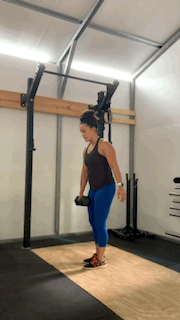
Triplanar Toe Taps
Why it’s great: Triplanar, or three-way, toe taps engage various lower body muscles, like the hip flexors and glutes, to build hip stability and overall balance. You can perform these with or without a resistance band, depending on the level of challenge you’re looking for.
RELATED: Hip Flexor Exercises
How to do it:
- Stand with your feet together and your knees slightly bent. If using the best resistance band for glutes, wrap it around your thighs just above the knees.
- Step forward with your right leg, then bring it back to center. Repeat for the desired number of reps, then switch sides and repeat the set.
- Step to the side with your right leg, then bring it back to center. Repeat for the desired number of reps, then switch sides and repeat the set.
- Step back with your right leg, then bring it back to center. Repeat for the desired number of reps, then switch sides and repeat the set.
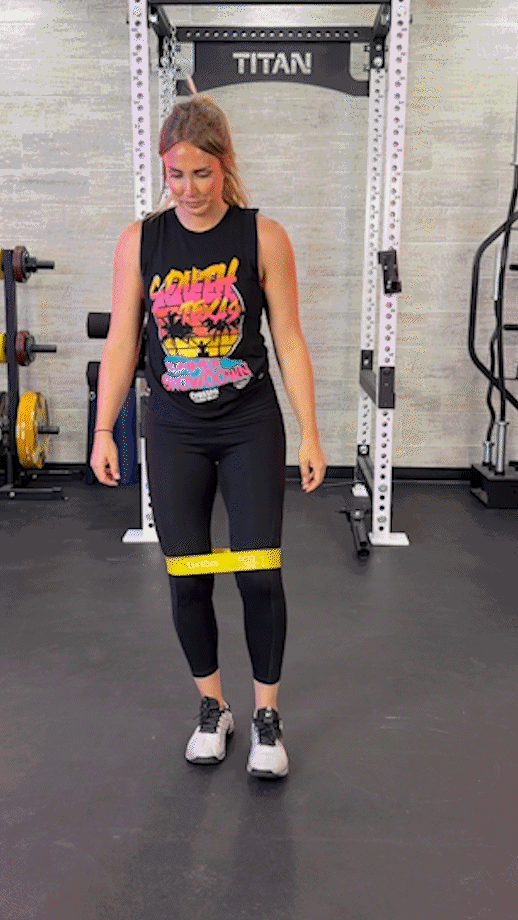
Stability Ball Plank
Why it’s great: Performing a front plank on a stability ball isn’t only good for building balance. According to a 2014 study published in the Journal of Strength and Conditioning Research5, planking on a Swiss ball also increases activation in your abdominal muscles, making it an all-around great core exercise.
RELATED: Plank Exercises
How to do it:
- Kneel on the floor with a Swiss ball in front of you. Place both elbows and forearms on the ball, then step your feet behind you into a plank position.
- Hold the position for the desired duration, maintaining a straight line from your shoulders to your heels.
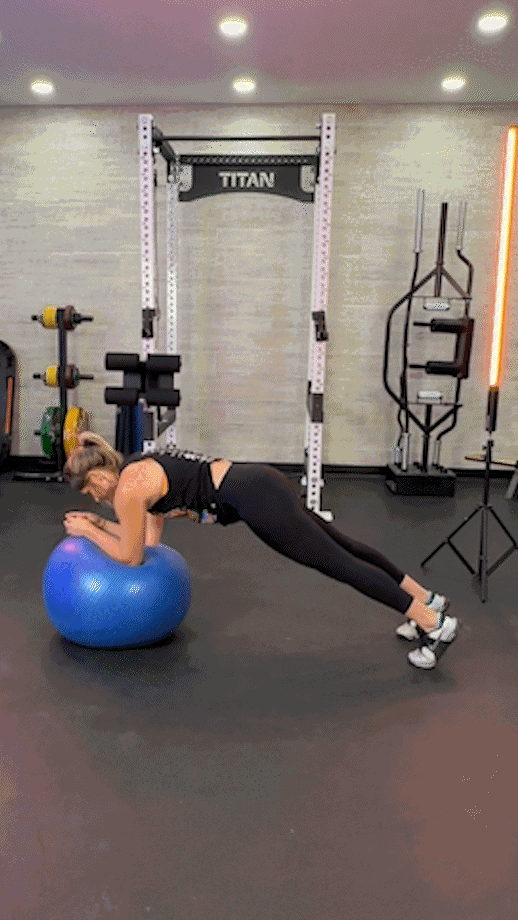
Standing Elbow-to-Knee
Why it’s great: The standing elbow-to-knee is like doing standing crunches, minus the stress on your lower back. Twisting your torso activates your core muscles, and standing on one leg helps build balance.
How to do it:
- Stand with your feet shoulder-width apart and your hands clasped behind your head.
- Bring your right knee to your left elbow, squeezing your abs at the end of the movement.
- Return to the starting position, then bring your left knee to your right elbow.
- Repeat each side for the desired number of repetitions.
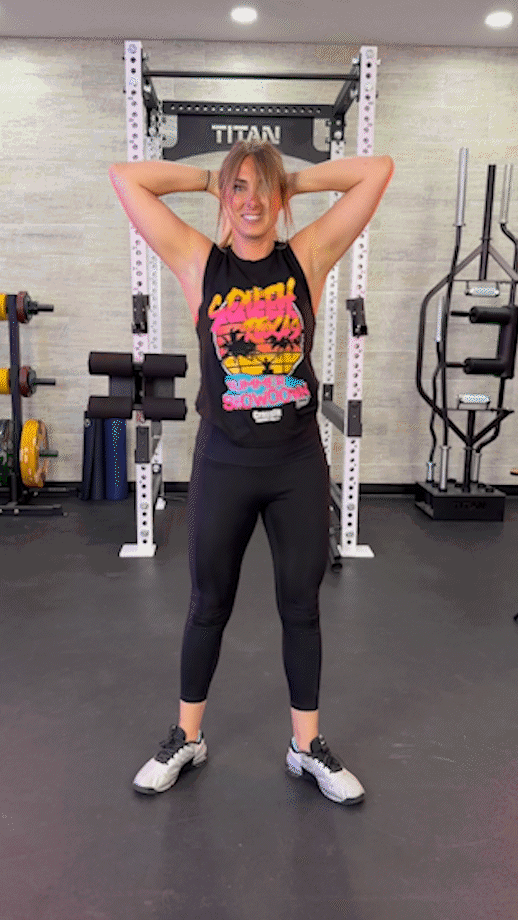
Single-Leg Sit-to-Stand
Why it’s great: The single-leg sit-to-stand is an exercise used often by physical therapists to strengthen or rehab the knee joint. Think of this exercise like a modified single-leg squat, with the chair (or bench) making the movement much more manageable.
How to do it:
- Place a chair on a non-slip surface—such as home gym flooring—or against a wall so it doesn’t slide. Start from a seated position.
- Place the heel of your non-working leg on the floor for support. If your current fitness level allows for it, you can lift the foot altogether.
- Drive the heel of the other leg into the floor to stand up.
- Slowly lower yourself back onto your chair.
- Repeat as needed for sets and reps.
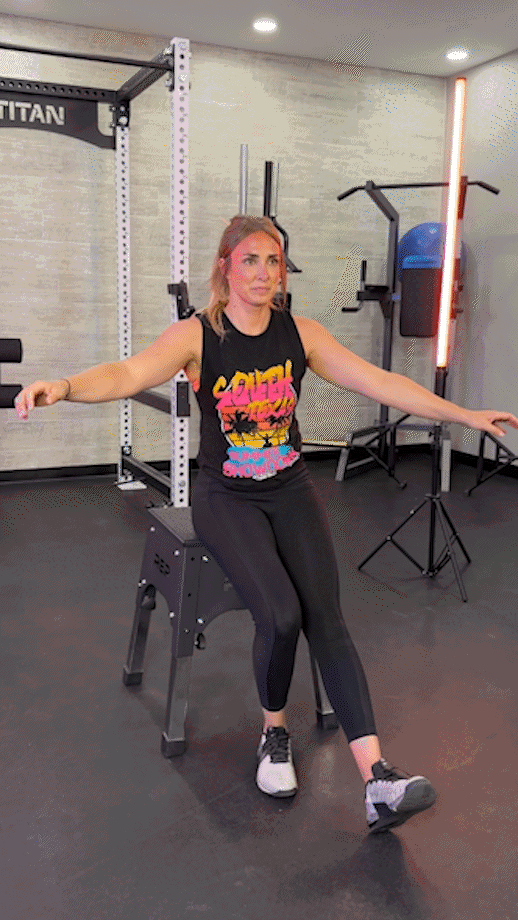
Benefits of Improving Your Balance
Now, working balance training exercises into your routine doesn’t guarantee you’ll win the next season of American Ninja Warrior, but there are various benefits associated with balance training.
A 2018 study published in the Journal of Advanced Pharmaceutical Technology & Research6 found that balance training helped reduce the intensity of nonspecific chronic lower back pain while increasing postural stability.
RELATED: The Best Lower Back Exercises
In a 2008 study published in Medicine and Science in Sports and Exercise7, balance training helped improve ankle function and postural control in patients with chronic ankle instability, making it useful for rehabilitation.
And, of course, balance training is very important for older adults. A 2015 study published in Clinical Rehabilitation8 found that a balance training program geared toward older active adults can help strengthen their ability to minimize the fall risks along with improvements in walking speed and overall physical function.
So, it doesn’t matter if you’re a top athlete in the prime of your career or an older adult looking for the ideal physical activity for reducing your risk of injury. Balance training is beneficial to everyone regardless of their fitness level.
RELATED: Expert Guide to Bosu Ball Exercises
How Balance Exercises Work
Balance is one of the four types of physical activity9, along with endurance, strength, and flexibility. Balance exercises work by helping you improve your muscle strength in the areas that keep you solidly on your feet, mainly your lower body and core. As you age, balance exercises become even more important for helping you stay coordinated and lowering your risk of falls.
RELATED: Best Ankle Stability Exercises
How To Incorporate Balance Exercises Into Your Workouts
There’s leg day, back and bis, chest and tris—so you can do a dedicated balance day, right?
The answer is yes you can, but it may not be the most efficient way of incorporating balance exercises into your routine. Kate Meier, GGR editorial team member and certified personal trainer (CPT), shares the following advice on incorporating balance training into your current training regimen.
RELATED: Balance Board Workout
“Balance training exercises target your stabilizing muscles,” says Kate, “which are smaller compared to muscle groups like the back, quads, and glutes. So, lead with compound movements or isolation exercises that target your main muscle groups, then do your balance work last.”
Studies show you’ll get the most impact from the exercises you perform at the beginning of your workout10, so hitting your big muscle groups before focusing on balance is the optimal approach.
Alternatively, you can set aside a day for activities known for building better balance, including yoga, gymnastics, martial arts, dance, Pilates workout, or Tai chi.
Balance Exercises: FAQs
What are 5 balance exercises?
There are many different balance exercises to choose from, and a regular yoga practice includes a wealth of excellent options. That said, five balance exercises that the fitness experts at GGR highly recommend for those looking to get started on balance training are:
-Single-leg stand
-Single-leg sit-to-stand
– Single-leg reach
-Heel-to-toe walking
-Tree pose
What is the number one balance exercise for seniors?
There are many excellent balance exercises for seniors to help with mobility (including several listed in this article). A few common denominators that you’ll see are single-leg stands, foot taps, and marching in place. Sitting to standing is also a great way for seniors to work on balance.
How can you fix poor balance?
Practice makes perfect, as the saying goes. You can start by adding balance exercises (like those listed above) to your regular training routine. You can also incorporate yoga and Pilates sessions to build the strength to maintain your balance. Another option is to work with a physical therapist or certified personal trainer for a more targeted approach.
RELATED: Best Online Personal Trainers
What is the best physical activity that can develop balance?
The short answer is: The best physical activity is the one that you’ll remain consistent with.
That said, there are a few physical activities that can help you develop better balance, including yoga, tai chi, and regular balance exercises. Or if you’re a more advanced exerciser, you can blend Bosu ball or balance board training into your regular regimen.
RELATED: Terra Core Review
References
- Moreland B, Kakara R, Henry A. Trends in Nonfatal Falls and Fall-Related Injuries Among Adults Aged ≥65 Years — United States, 2012–2018. MMWR Morb Mortal Wkly Rep 2020;69:875–881. DOI: http://dx.doi.org/10.15585/mmwr.mm6927a5
- Older adults and balance problems. (September 12, 2022). National Institute on Aging. (September 12, 2022) Accessed July 11, 2023 from: https://www.nia.nih.gov/health/falls-and-falls-prevention/older-adults-and-balance-problems
- Aman JE, Elangovan N, Yeh IL, Konczak J. The effectiveness of proprioceptive training for improving motor function: a systematic review. Front Hum Neurosci. 2015 Jan 28;8:1075. doi: 10.3389/fnhum.2014.01075. PMID: 25674059; PMCID: PMC4309156.
- Collings TJ, Bourne MN, Barrett RS, et al. Gluteal Muscle Forces during Hip-Focused Injury Prevention and Rehabilitation Exercises. Med Sci Sports Exerc. 2023;55(4):650-660. doi:10.1249/MSS.0000000000003091
- Snarr RL, Esco MR. Electromyographical comparison of plank variations performed with and without instability devices. J Strength Cond Res. 2014;28(11):3298-3305. doi:10.1519/JSC.0000000000000521
- Hosseinifar M, Akbari A, Mahdavi M, Rahmati M. Comparison of balance and stabilizing trainings on balance indices in patients suffering from nonspecific chronic low back pain. J Adv Pharm Technol Res. 2018;9(2):44-50. doi:10.4103/japtr.JAPTR_130_18
- McKeon PO, Ingersoll CD, Kerrigan DC, Saliba E, Bennett BC, Hertel J. Balance training improves function and postural control in those with chronic ankle instability. Med Sci Sports Exerc. 2008;40(10):1810-1819. doi:10.1249/MSS.0b013e31817e0f92
- Halvarsson A, Dohrn IM, Ståhle A. Taking balance training for older adults one step further: the rationale for and a description of a proven balance training programme. Clin Rehabil. 2015;29(5):417-425. doi:10.1177/0269215514546770
- Four Types of Exercise and Physical Activity. (June 11, 2024). National Institute on Aging. (September 12, 2022) Accessed September 12, 2024 from: https://www.nia.nih.gov/health/exercise-and-physical-activity/four-types-exercise-and-physical-activity
- Simão R, Spineti J, de Salles BF, et al. Influence of exercise order on maximum strength and muscle thickness in untrained men. J Sports Sci Med. 2010;9(1):1-7. Published 2010 Mar 1.




